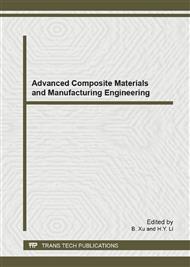p.32
p.36
p.40
p.44
p.49
p.53
p.57
p.62
p.66
The Wood Composite Materials of Table Tennis Bat and Batting Techniques
Abstract:
With the table tennis technical innovation and improvement of science, high-performance materials are used to manufacture of table tennis plate floor and help athletes have achieved better results. This article elaborated the wood composite materials’s impact on batting techniques through the analysis of the function of table tennis racket floor and its structure and capacity based on material science for provide the reference on manufacturing and selecting of table tennis racket.
Info:
Periodical:
Pages:
49-52
Citation:
Online since:
October 2012
Authors:
Price:
Сopyright:
© 2012 Trans Tech Publications Ltd. All Rights Reserved
Share:
Citation:


